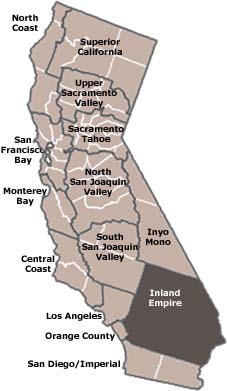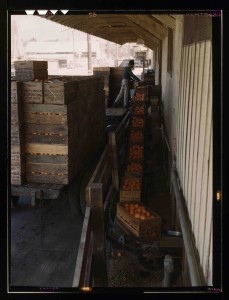According to a report [pdf] from the California Employee Development Department, the Inland Empire since 1984 has created an average of 32,208 new jobs per year. The highest year of job creation, 2005, saw 62,663 new jobs in the region.
But, as I’ve noted, the current jobs situation in IE is dire, with unemployment at 9.1% and forecast to rise above 12%. Here’s some more color behind those unemployment rates:
The IE has lost a net total of 19,700 for the year to date, the first time since at least 1984. Disregarding job creation, a total of 31,000 jobs have been lost, nearly all (an estimated 95%, according to John Husing*) tied to construction.
The collapse has been swift and severe. As I’ve discussed before, the IE has low educational attainment rates. Given that fact, blue collar jobs, notably construction, are especially important here.
Share of Adults, No College Class
Southern California Counties, People 25 & Over, 2006**
| San Bernardino. | 52% | |
| Riverside | 51% | |
| Los Angele | 48% | |
| Orange | 37% | |
| San Diego | 36% | |
~
According to Grubb & Ellis, the region still accounts for four fifths of the entire southern California industrial construction market. But there are lots of empty office, warehouse, and light industrial buildings all around — I can think of several city blocks of newly built industrial buildings that are sitting empty in Redlands at the moment. That construction market, in other words, will continue to slow with the attendant effects on employment.
* Of Economics & Politics, Inc. The data here comes from a presentation entitled “Inland Empire 2008 : A Very Difficult Year!” [ppt].
** 2006 American Community Survey via Economics & Politics, Inc.


 Via the
Via the 